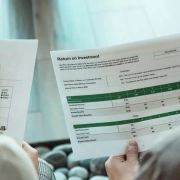The Basics of Leveraging Investment Properties
Table of Contents
ToggleInvesting in property has long been a favoured strategy for Australians seeking to grow their wealth. By leveraging investment properties, you can amplify your financial potential and achieve your goals sooner. But what does leveraging entail, and how can it be used effectively? Here, we explore the fundamentals of leveraging, its benefits, and the risks to consider for those interested in building wealth through real estate.
What is Property Leveraging?
Leveraging is the strategic use of borrowed capital to increase the potential return on investment. In the context of property, this means using a loan to purchase real estate assets while retaining only a fraction of the property value as your own equity. It allows investors to control larger assets with less upfront capital, creating opportunities to grow their wealth.
Benefits of Leveraging Investment Properties
Leveraging offers several advantages to astute investors:
- Increased Purchasing Power: Gain access to higher-value properties that might otherwise be out of reach.
- Wealth Accumulation: Amplify returns on investment as property values appreciate.
- Tax Advantages: Potentially deduct interest expenses and other costs from your taxable income.
Understanding these benefits is essential to making informed decisions about your financial strategy.
Understanding Equity in Investment Properties
Equity is a key component of leveraging. It represents the difference between your property’s market value and the outstanding balance of your loan. Building equity over time allows you to:
- Reinvest in additional properties.
- Consolidate debt.
- Increase borrowing capacity.
Knowing how to calculate and use equity effectively is vital for leveraging success.
How to Leverage an Investment Property
To leverage an investment property, follow these steps:
- Assess Your Current Equity: Obtain a property valuation and subtract your mortgage balance.
- Consult a Financial Adviser: Work with a trusted Toowoomba financial adviser to structure your strategy.
- Secure Financing: Choose a suitable loan product tailored to your goals.
- Diversify Investments: Use funds wisely to acquire additional properties or other assets.
Risks of Leveraging in Real Estate
While leveraging has undeniable benefits, it’s not without risks:
- Market Fluctuations: Property values can decline, reducing equity and creating financial stress.
- Increased Debt Levels: Borrowing amplifies potential losses as well as gains.
- Interest Rate Variability: Rising rates may increase repayment obligations.
Careful planning and professional advice can help mitigate these risks.
The Role of Interest Rates in Leveraging
Interest rates are a crucial consideration in property leveraging. Low rates make borrowing more affordable, enabling greater leverage. Conversely, high rates can strain cash flow and reduce investment returns. Monitoring rate trends and opting for fixed or variable loans strategically is essential for long-term success.
Tax Implications of Leveraging Investment Properties
Leveraging can provide several tax benefits, including:
- Deduction of interest expenses.
- Depreciation of property assets.
- Capital gains tax discounts upon the sale of an asset.
Engaging a financial adviser in Toowoomba can help you navigate the complex tax landscape.
The Importance of Cash Flow Management
Managing cash flow is vital when leveraging investment properties. Ensure you have sufficient income to cover loan repayments, maintenance costs, and unexpected expenses. Positive cash flow properties can provide a financial buffer, reducing risk and improving long-term viability.
Leveraging for Retirement Planning
Leveraging investment properties can play a pivotal role in retirement financial advice. By building a property portfolio, you create a source of passive income that can support your lifestyle in later years. Work with an online financial adviser to tailor a strategy aligned with your retirement goals.
Diversifying Your Investment Portfolio
While property is a popular choice, diversification remains a cornerstone of sound financial planning. Consider balancing your leveraged property investments with shares, bonds, or other asset classes to reduce risk and enhance overall returns.
Seeking Professional Financial Advice
Leveraging requires a well-thought-out strategy and ongoing management. Partnering with a Toowoomba financial adviser who specialises in financial planning and SMSF strategies ensures you make informed decisions. At Wealth Factory, we provide expert guidance tailored to your unique financial circumstances and aspirations.
Conclusion
Leveraging investment properties is a powerful tool for wealth creation, but it requires careful planning and professional oversight. By understanding the basics and seeking expert advice, you can maximise the benefits while minimising risks. Contact Rob Laurie, Master Financial Planning and SMSF Specialist Advisor at Wealth Factory in Toowoomba, to learn more about how leveraging can help you achieve your financial dreams.









